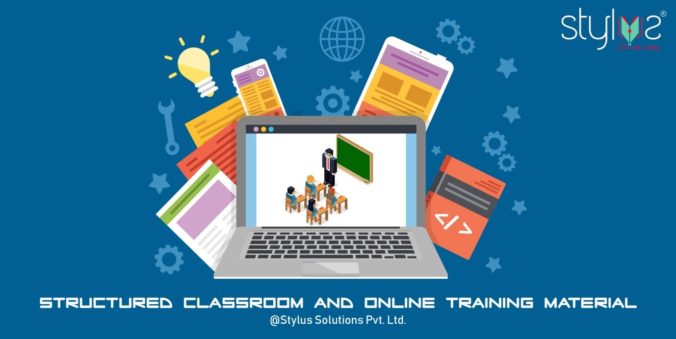Similar to global conventions, courseware design in India also relies on a basic framework. This framework allows you to design learning material in order to reflect the classification of skills you want the learners to adopt. The application of the principles of Bloom’s Taxonomy can help you organise the learning objectives in any courseware.
What is Blooms Taxonomy?
Bloom’s Taxonomy offers a globally recognised framework that is instrumental in courseware design. It is a hierarchal system created by a committee headed by Benjamin Bloom in 1956. It is a classification designed to help you organise and categorise learning objectives effectively for courseware, such as in k12 course development. Over the years, Bloom’s Taxonomy has been adopted all over the world and improved upon to be used for creating structured curriculum. It also allows you to design effective assessments and class activities in a courseware.
Bloom’s Taxonomy is categorised into six levels of cognitive learning. Let’s learn about the different levels.
- Knowledge: This level asks the learner to retrieve, recognise and recall underlying information that they have learned earlier by memory. Some of the appropriate verbs for this level include define, describe, identify, list, match, recall and select.
- Comprehension: This level asks the learner to classify, summarise and infer the available information to develop a full understanding of the given knowledge. Here, learners are expected to construct meaning through interpretation of oral, written, and graphic messages. Some of the appropriate verbs for this level include classify, describe, discuss, distinguish, explain, identify, locate and select.
- Application: This level asks the learner to execute or implement the obtained knowledge and apply it to different hypothetical and practical situations. Some of the appropriate verbs for this level include apply, change, convert, demonstrate, illustrate, modify, prepare, use, show, sketch, solve and write.
- Analysis: This level asks the learners to differentiate, organise and attribute constituent parts of each lesson. Here, it is expected from learners to go beyond comprehension and recognise the hierarchy of concepts so that they can break down each individual concept into parts that are related to each other. Some of the appropriate verbs for this level include analyse, calculate, categorise, compare, differentiate, distinguish, examine, identify, illustrate and select.
- Evaluation: This level asks the learner to check and critique the available information, and define the value and purpose of the concepts learned. Some of the appropriate verbs for this level include assess, choose, compare, conclude, describe, estimate, evaluate, explain, select and summarise.
- Creation: This level asks the learner to reorganise the elements of a lesson into a new pattern. Here, the learners are expected to have a deep understanding of the learned concepts, so that they can break it into smaller pieces and create a new coherent or functional concept on their own. Some of the appropriate verbs for this level include arrange, compose, create, design, develop, explain, generate, plan, prepare, rearrange, reconstruct, rewrite and write.
Mapping Bloom’s Levels to a Courseware
The different levels of Bloom’s Taxonomy are implemented to help build the learner’s understanding of a topic. It starts with a rudimentary grasp of the subject matter, which progresses into an in-depth evaluation of the same so that the learners can apply the obtained knowledge by themselves.
Defining Course Objectives
As practised in courseware design in India, the 2001 edition of the Bloom’s Taxonomy makes use of action verbs to define learning objectives that align with each level.
Each level helps to encourage the cognitive process in learners with a unidirectional progression targeted to test the recognising, recalling and summarising abilities by the learners. Its goal is to gradually build the knowledge and skills of the learners, which starts with creating course objectives.
Each lesson level objective is created with an action verb such as “explain”, “list” and “describe” that builds towards a broader course objective. It also includes the use of multilevel-verbs applicable for multiple Bloom’s Taxonomy levels, such as “explain”. In relation to Blooms’ level, a lesson level objective verb cannot be higher than a course level objective verb, however, it can be lower or equal to the same.
Mapping Courseware Content
Blooms’ Taxonomy offers an ideal foundation for further courseware development of advanced levels. Mapping the correct order of learning development gradually progresses from a learner’s ability to recognise information to the ability to create original work. This order is based on learners’ needs that can help you establish the primary course learning objectives.
Once the objectives are defined, you can break the big ideas down into smaller learning elements, which progressively get challenging. Each portion of assessment and assignments must be according to these learning elements. A logical course outline allows you to develop a learner’s expertise in the topic, gradually and consistently.
